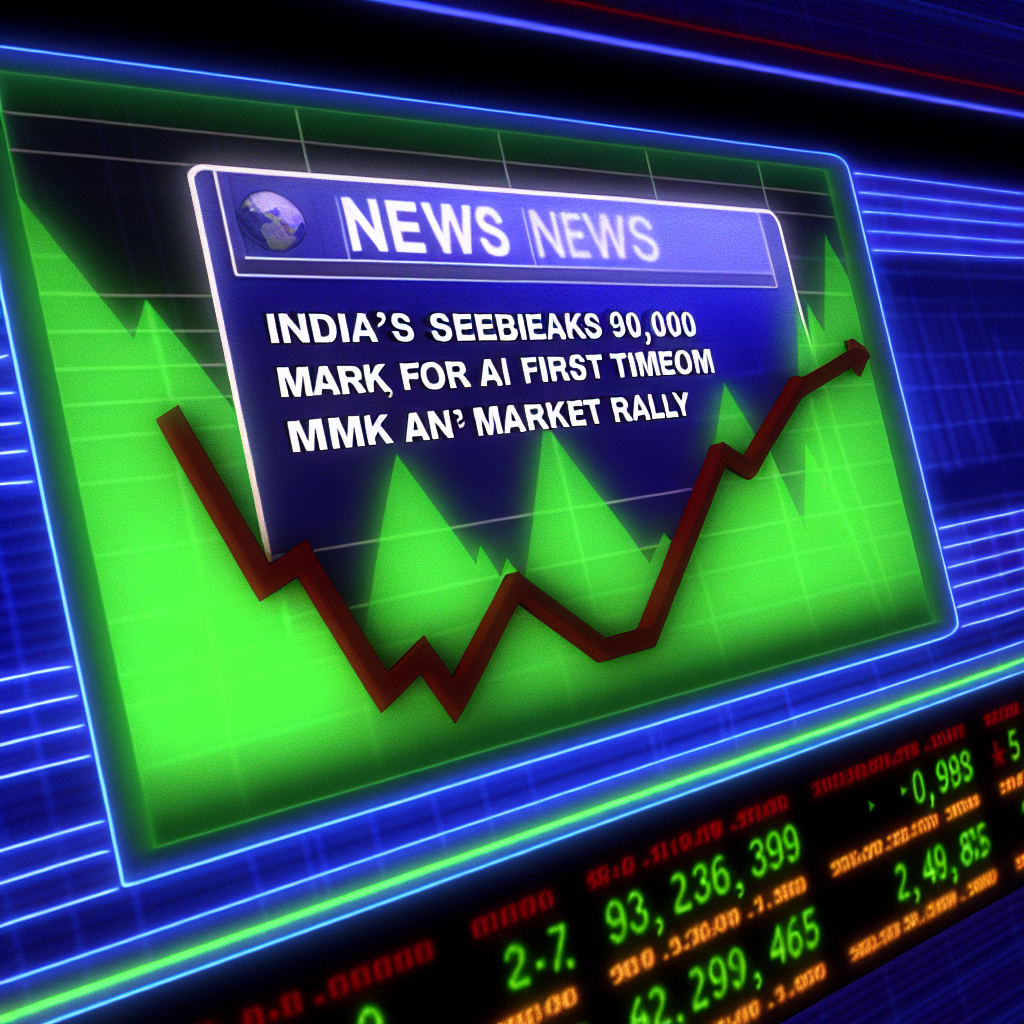India’s Sensex Breaks 90,000 Mark for First Time in Market Rally
In a historic milestone, India’s benchmark stock index, the BSE Sensex, has crossed the 90,000 mark for the first time, marking a significant achievement in the Indian financial markets. This remarkable rally has been fueled by a combination of strong corporate earnings, favorable government policies, and a robust economic recovery post-pandemic. Investors and analysts alike are keen to understand the implications of this surge and what it means for the future of the Indian economy.
The Journey to 90,000
The Sensex, which comprises 30 of the largest and most actively traded stocks on the Bombay Stock Exchange, has seen a meteoric rise over the past few years. The journey to the 90,000 mark has been characterized by:
- Strong Corporate Earnings: Many companies have reported better-than-expected quarterly results, driven by increased consumer demand and improved operational efficiencies.
- Government Initiatives: The Indian government has implemented various reforms aimed at boosting economic growth, including tax cuts and infrastructure investments.
- Foreign Investment: A surge in foreign direct investment (FDI) has bolstered market confidence, with global investors increasingly looking to India as a viable investment destination.
Factors Driving the Market Rally
Several key factors have contributed to the Sensex’s unprecedented rise, including:
- Economic Recovery: Following the disruptions caused by the COVID-19 pandemic, India’s economy has shown signs of robust recovery, with GDP growth projected to be among the highest in the world.
- Technological Advancements: The digital transformation across various sectors has led to increased productivity and efficiency, further driving corporate profitability.
- Low-Interest Rates: The Reserve Bank of India (RBI) has maintained a low-interest-rate environment, encouraging borrowing and investment.
Market Sentiment and Investor Confidence
The crossing of the 90,000 mark has significantly boosted market sentiment. Investors are optimistic about the future, as evidenced by:
- Increased Retail Participation: More retail investors are entering the market, attracted by the potential for high returns.
- Institutional Investments: Domestic and foreign institutional investors have increased their stakes in Indian equities, further driving up prices.
- Positive Global Trends: Global markets have also shown resilience, with many economies recovering from the pandemic, which has positively influenced investor sentiment in India.
Challenges Ahead
Despite the euphoria surrounding the Sensex’s rise, several challenges remain that could impact future growth:
- Inflation Concerns: Rising inflation could lead to tighter monetary policies, which may dampen market enthusiasm.
- Geopolitical Tensions: Ongoing geopolitical issues, particularly in neighboring regions, could create uncertainty in the markets.
- Global Economic Slowdown: A slowdown in major economies could have a ripple effect on India’s growth prospects.
Conclusion: A New Era for Indian Markets
The BSE Sensex breaking the 90,000 mark is not just a number; it symbolizes the resilience and potential of the Indian economy. As the market continues to evolve, investors must remain vigilant and informed about the underlying factors that drive market movements. While the current rally presents numerous opportunities, it is essential to navigate the challenges ahead with caution. The future of India’s financial markets looks promising, but sustained growth will depend on addressing economic challenges and maintaining investor confidence.
In summary, the historic achievement of the Sensex crossing 90,000 reflects a broader narrative of recovery and growth in India. With strong corporate performance, supportive government policies, and a favorable investment climate, the Indian stock market is poised for further advancements, making it an exciting time for investors and stakeholders alike.





